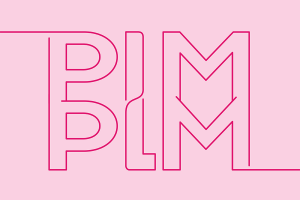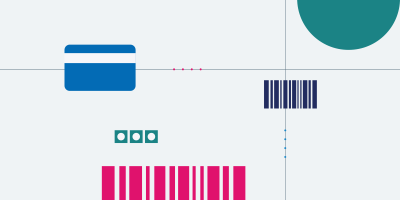
What’s the Difference Between PIM and PLM?

The difference between product information management (PIM) and product lifecycle management (PLM) systems can be easily misunderstood — even among those in e-commerce. Although both of these tools are designed to streamline how products are brought to market, they play distinct roles in business operations. While there may be some overlap, it’s important to note that both are valuable solutions. And fortunately, they can work together to create operational efficiencies..
If and how organizations use PIM and PLM tools comes down to individual business needs. So instead of pitting them against each other, we’ll take a look at the unique and overlapping features of both to help you determine which system you need to best support your business.
What is PIM?
|
Product information management (PIM) is the process of collecting and managing all the needed information — from descriptions to images and more — about a given product, in a single source or database. |
PIM software allows you to collect, input, and adjust all the information for a product. Approved product listings can be sent to all your marketing, digital, and storefront applications. PIM solutions help you reduce the time needed for product data management while ensuring accuracy and consistency at every level.
PIM works by creating a centralized location for all of the product data created by various departments and tools. A PIM system ingests product specifications and other basic information from a source system like an enterprise resource planning (ERP) platform and photographs and videos from a digital asset management (DAM) system, while providing a place for marketing to input descriptions and other copy.
When adjustments to product data must be made, PIM systems allow them to be changed one time, rather than manually updated in every distribution channel. It’s not hard to see how this could significantly reduce the time you currently spend making and tracking changes in various places. The end result? You have more time to spend on your company's core business process.
To learn more about product information management in e-commerce, check out this in-depth article about PIM for e-commerce applications.
What is PLM?
|
Product lifecycle management (or PLM) is the use of software tools to take a product from concept to shelf (physical or virtual) in the consumer marketplace. |
By implementing a PLM system, businesses can manage every aspect of the product development process more efficiently. This can in turn increase productivity during the manufacturing process and provide you with the information needed to promote higher profits in the marketplace.
What does PLM do?
A PLM tool provides support for all stages of the product design and development process, from initial idea to prototyping, manufacturing, and distribution. This solution is most commonly used by B2C and B2B product development teams to store and collaborate on product data across the concept to market phases of the process.
A PLM platform is a single source for all product development data and can serve as a valuable resource for your business operations. It can also make it easier to manage the disposal or return of any unsold products. Some of the information contained in your PLM solution may include design data like 3-D models, prototype specifications, versions, revisions, manufacturing drawings, and information on the physical parts that make up the product. Once the product development phase is complete, the finalized data is often moved to an enterprise resource planning (ERP) tool where it can be connected with other software — including a PIM solution — for marketing and distribution.
So what's the difference between PIM and PLM?
Thinking about PIM and PLM as opposing or exclusionary processes can prevent your company from achieving the best results for your e-commerce efforts. PLM versus PIM is not a practical way of considering these tools when you’re evaluating which you need.
Often, it’s not an either-or decision. Instead, it may be helpful to think about the ways in which these systems can work together to promote increased productivity, brand consistency, customer satisfaction, and ultimately, improved profits.
Let’s explore the capabilities you can expect to find within PIM and PLM tools.
PLM capabilities
By taking your products from start to finish with PLM, you can ensure the most efficient use of your available resources at every stage of the product development, manufacturing, and distribution process. When considering a PLM solution you should expect to be able to:
- Reduce the time needed to get your products to market
- Improve productivity throughout the development process
- Increase the quality and utility of your products
- Lower the costs of production now and in the future
- Create innovative solutions for developing new products
- Increase profitability for your business
PIM capabilities
A PIM platform gives teams enhanced control and agility throughout the marketing and distribution process by centralizing the information they need to launch and market products. When considering a PIM solution you should expect to be able to:
- Organize content in one system
- Provide customers with consistently accurate product information
- Automate manual tasks
- Get products to market faster
- Organize product content for omnichannel distribution
While PIM is primarily used for collecting and managing information like images, attributes, and descriptions of your products, a PLM solution can be used to populate this information in the PIM platform from the notes and logs kept during the PLM process. By creating accurate product information via PLM from the very beginning of the process, and transferring it seamlessly to your PIM database, you can save time and effort in managing important data.
In this way, PLM can be used to drive your PIM implementation. Proper product lifecycle management practices will make it much easier to create consumer-friendly descriptions, and generate accurate and consistent information for marketing materials across all your sales channels. PLM is also a critical part of the customer service process. It allows members from every team in your organization to provide the same detailed, up-to-date answers to specific product-related questions whenever they arise.
It may help to think of PIM as the system for current description and information about your products, and PLM as the platform for historic information about how the product was made, all of its component parts, and how it was brought to market.
Choosing between PIM and PLM for your business
Choosing PIM and PLM systems that work together seamlessly can supercharge your marketing and e-commerce efforts. That’s why it’s important to understand your processes and use cases so that you can select the systems that work best for your needs.
At Acquia, we specialize in content management solutions for brands. Our combined digital asset management (DAM) and PIM platform, Acquia DAM (Widen) is a centralized foundation for the entire content lifecycle. Explore more about our PIM solution or get in touch with us to talk through your specific product content goals and how we can help.
Note: This article was originally published on Widen.com.



